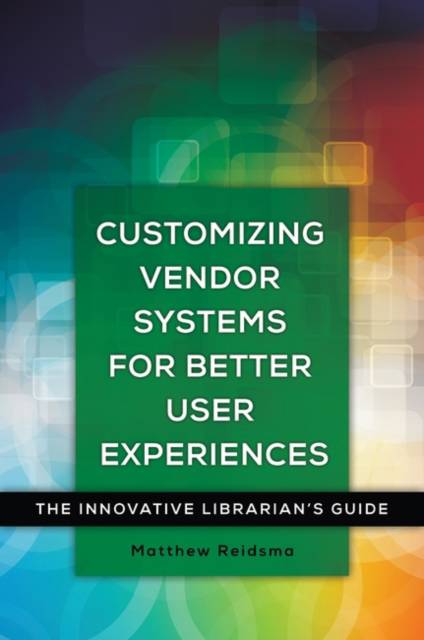
- Afhalen na 1 uur in een winkel met voorraad
- Gratis thuislevering in België vanaf € 30
- Ruim aanbod met 7 miljoen producten
- Afhalen na 1 uur in een winkel met voorraad
- Gratis thuislevering in België vanaf € 30
- Ruim aanbod met 7 miljoen producten
Zoeken
Customizing Vendor Systems for Better User Experiences
The Innovative Librarian's Guide
Matthew Reidsma
€ 101,95
+ 203 punten
Omschrijving
Discover how--with relatively straightforward scripts and minimal coding--to customize the user interfaces to third-party systems from your library's website for better communication with your users and to lead them to your library's services.
In order to provide access to online resources, libraries depend on third-party vendor software that comes with each product. While these systems do have value, they can also be confusing, awkward, frustrating, or even misleading for library users. Imagine how much better your patrons' user experience would be if the software were customized specifically to fit your library. This how-to guide shows library staff how to take a DIY approach to customize the web interface to vendor-hosted online systems, thereby resolving usability problems and providing the ability to respond quickly to problems or evolving needs. The book begins with an explanation of how to test library vendor software for user experience, then goes on to present solutions to common usability problems through tutorials and case studies on using JavaScript or jQuery to change how a web browser displays that software. It also covers ongoing assessment methods to ensure that user needs have been satisfied. By using these tools, libraries can take some control of "black box" library software and customize it based on local needs.Specificaties
Betrokkenen
- Auteur(s):
- Uitgeverij:
Inhoud
- Aantal bladzijden:
- 178
- Taal:
- Engels
- Reeks:
Eigenschappen
- Productcode (EAN):
- 9781440843846
- Verschijningsdatum:
- 9/05/2016
- Uitvoering:
- Paperback
- Formaat:
- Trade paperback (VS)
- Afmetingen:
- 152 mm x 231 mm
- Gewicht:
- 294 g

Alleen bij Standaard Boekhandel
+ 203 punten op je klantenkaart van Standaard Boekhandel
Beoordelingen
We publiceren alleen reviews die voldoen aan de voorwaarden voor reviews. Bekijk onze voorwaarden voor reviews.











